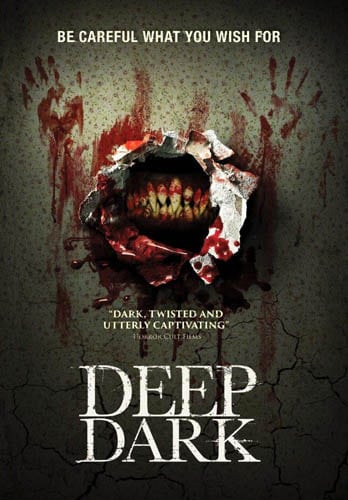
Hermann, a failed sculptor, is about to end it all when he finds a strange, talking hole in the wall. The hole (Denise Poirier, the voice of ÆON FLUX) has the power to fulfill his wildest dreams, or it just may become his worst nightmare. Deep Dark is a twisted tale warning you to be careful what you wish for…because it just might get you.
To celebrate the U.S. release of DEEP DARK on DVD and VOD, available now, we spoke to the film’s writer and director, MICHAEL MEDAGLIA, about the film.
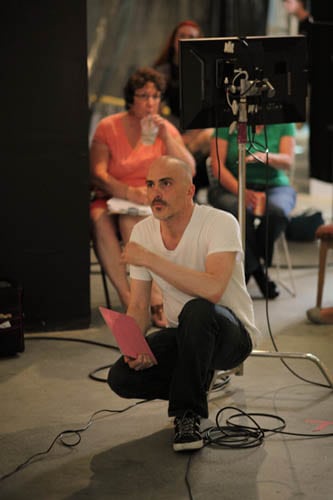
Hi Michael. How did you get into filmmaking?
I came to it a bit later in life, while I was studying to become an engineer. It was at a science and engineering university but they had a great agreement with a neighbouring art college: if you went to one school, you could take classes at the other. So, the engineering students could take classes at the art school and vice-versa. I took a bunch of art classes—including a basic film class. They gave us a super-8 camera and set us loose. They told us to just go out and make films. My first film ever was a kung-fu flick. It was really terrible–but it was so much fun to make! I’ve been making films ever since. Luckily my filmmaking has improved a bit.
What inspired you when writing ‘Deep Dark’?
I wrote it about 8 years ago. I was at a point in my life where I was having trouble balancing my creative career and my love life. Neither was working out well at the time. This was probably the inspiration for the love-triangle in the film. I remember there was one key scene that came to me very early on—the one where Hermann finds a string in the wall. He pulls the string and finds a message at the end of it. The paper was aged and seemed to have been in the wall forever, but they were answering his questions in real-time. I found something compelling about that, like it was predetermined. That became the kernel idea for the story. The rest of the story formed around it.
How did you go about finding the voice for the hole in the wall?
While writing the screenplay, it helped me to imagine an actual voice for The Hole. For me, that was the voice of the animated version Aeon Flux, played by actress Denise Poirier. During production we used a temp voice, but when it became time to record The Hole’s dialogue I tracked Denise down and sent her the script. I had no idea how she would feel about the bizarre material and I remember being quite nervous about contacting her. Luckily she liked the story and agreed to take the role. I was ecstatic. It’s so rare for a writer to have a role cast as the exact actor you were imagining when you wrote the script. So it was a dream come true for me. Denise did an amazing job—she can be both commanding yet hypnotic—something The Hole needs to be in order to persuade people to do her bidding.
How did you meet fellow filmmaker and producer, Todd E. Freeman?
In the very early stages of Deep Dark’s development, I was seeking production partners to help get the project off the ground. At the time, the team consisted of only producer David Woods and myself. Then I met Lara Cuddy, who had already produced quite a few features, one of which was Cell Count (directed by Todd E. Freeman). Lara liked the script a lot and connected me with Todd and his brother Jason. I remember we had quite a few meetings to determine if they wanted to be involved with the project. These were nominally business meetings but honestly I think we spent most of the time talking about filmmaking and film. It was great because they weren’t just producers but filmmakers as well. In the end they agreed to do it and with Lara and the Freeman brothers on board, I knew we finally had the right team to complete the project.
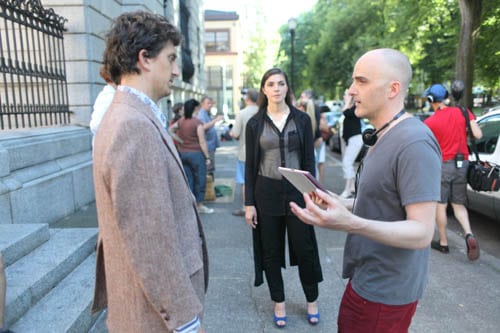
How long did the shoot take and where was it shot?
We shot almost entirely in Portland, USA over a period of 3 weeks. All the apartment scenes were shot on a set, which we built at a great Halloween haunt called The Four Horsemen. It was a stroke of luck because we were shooting in June and they weren’t using it much at the time. We came to an agreement that was win-win for everyone. There were some additional scenes which were shot outside of Portland. These were The Uncle Felix scenes, which meant take place in South America. We needed a lush location with tropical palm trees and ocean. We couldn’t afford to fly to South American so we did the next best thing: go to Santa Barbara, California for a day.
Have you any funny stories from the shoot?
It was a pretty relaxed set and I remember one crew member had a dog with them one day. The dog was super friendly. At one point it came running towards us, happily wagging it’s tail. We were horrified to see its mouth was drenched in blood. It looked like it killed a small animal or something straight out of Cujo. It turns out the dog found a bucket of fake blood and had started lapping it up. We were relieved. The dog was fine and we made sure to cover our open containers from then on.
If you found yourself a hole in the wall, like in the movie, what would you want help with?
My next screenplay. Writing is hard work!
Do you have an interest in the art world?
Yes, I think the art world is a fascinating ecosystem. You have the artists who, for the most part, don’t make art in order to get rich but at some point have to sell their art to make a living. Then you have the gallerists, who may the most interesting, because they have to be great salesmen, yet instead of selling cars or insurance they’ve chosen to sell fine art. It’s an interesting collision between art and commerce. And what are you really buying when you purchase an original piece of art? There’s the physical art itself but I think there’s something more to it. I think it becomes a part of you in a small way, because you’ve decided to place value on it. Maybe I’m thinking about it too much.
Leading actor Sean McGrath is excellent as failed artist Hermann. How did he get involved with the project?
It’s an interesting story. I had been searching for the right actor for the part of Hermann. It’s rather a tough role to fill. The actor has to be capable of being a leading man yet not look like your typical, chisel-jawed athlete. He’d also be playing many scenes with nothing but a hole in the wall—so few actors can carry a scene all by themselves. I searched for quite a while. Finally, when we were getting ready to cast the film, I sat down for our first meeting with casting director, Lori Lewis. She said “I have a great actor in mind for Hermann.” “You do?” I replied. “Because there’s someone I already had my eye on.” She pulled up a website with dozens of actor headshots and as she’s scrolling, we both simultaneously said, “There he is!” We were both pointing to the same actor: Sean McGrath. We still held auditions but after seeing him read a few scenes I knew he was right for the part. He did a fantastic job.
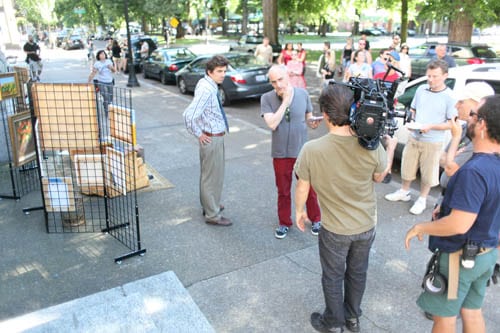
‘Deep Dark’ is your first feature film. How did you find creating and writing a feature compared with the short films?
Making shorts is a great way to prepare for making a feature. The language of cinema is essentially the same for both. Of course there’s lot more organization and preparation that goes into a feature, but I think the biggest difference is the pure physical and mental toll feature production takes on you. After several weeks of shooting, it becomes truly exhausting. It’s important not to lose site of the film as a whole—as a director I think this is your most crucial job. I wasn’t sure what to expect when we started. I’ve heard of directors losing it, throwing tantrums, etc. I’m happy to say none of that happened. The shoots were all pretty mellow. We kept the drama in front of the camera. I have to say, I really loved the experience and can’t wait to do it again.
Where can film fans see ‘Deep Dark’?
If you’re in North America or Australia you’ll be able to see it from today on all the major VOD channels, as well as DVD. As for the UK, we’re still working on getting a proper release. If you like, you can sign up at our website, deepdarkmovie.com and we’ll alert you when it’s coming out in your country.
What’s your favourite horror movie of all time?
Hmmm. I can only pick one? John Carpenter’s The Thing is one of the tops for me.
Thank you Michael for your time.
You can find out more about Deep Dark on the official website, Michael’s Twitter and Facebook.

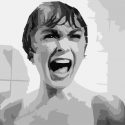
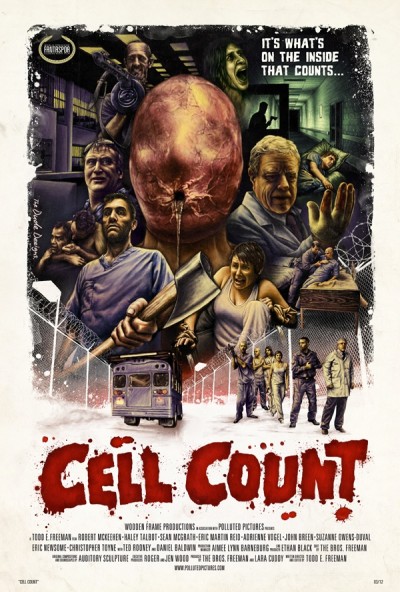

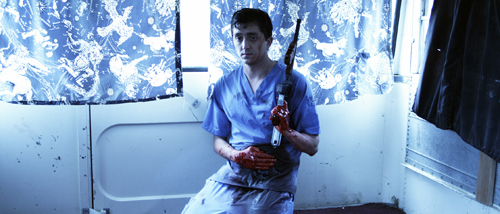
Be the first to comment